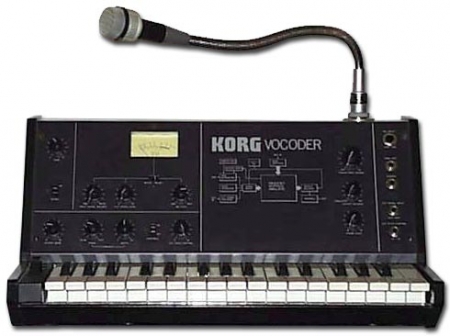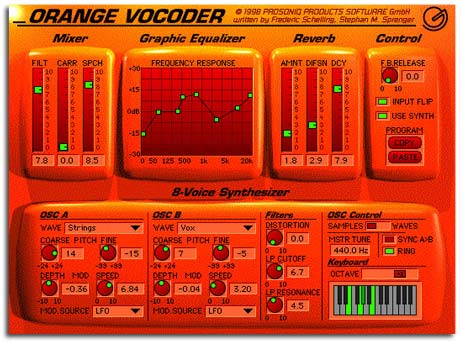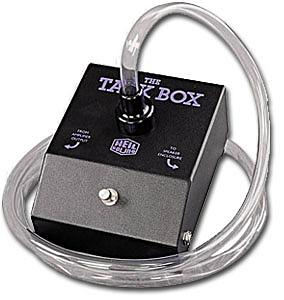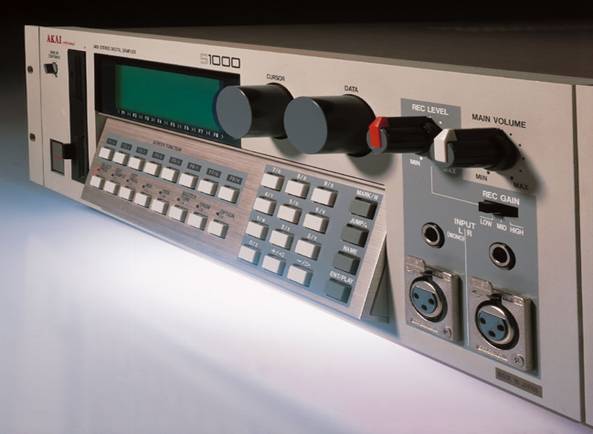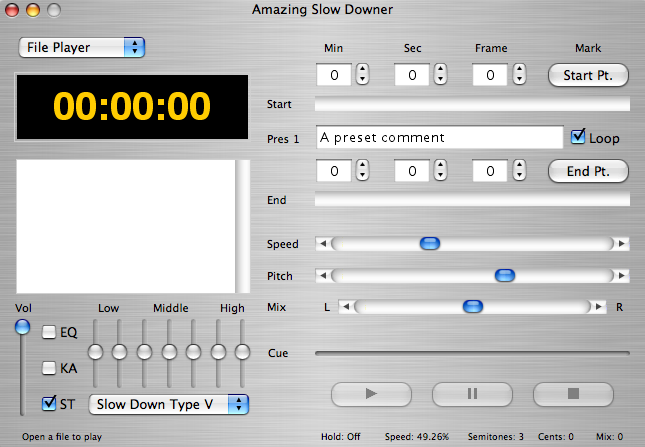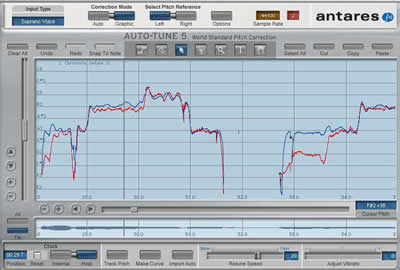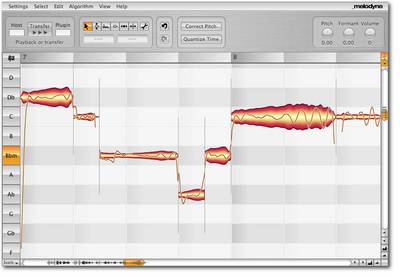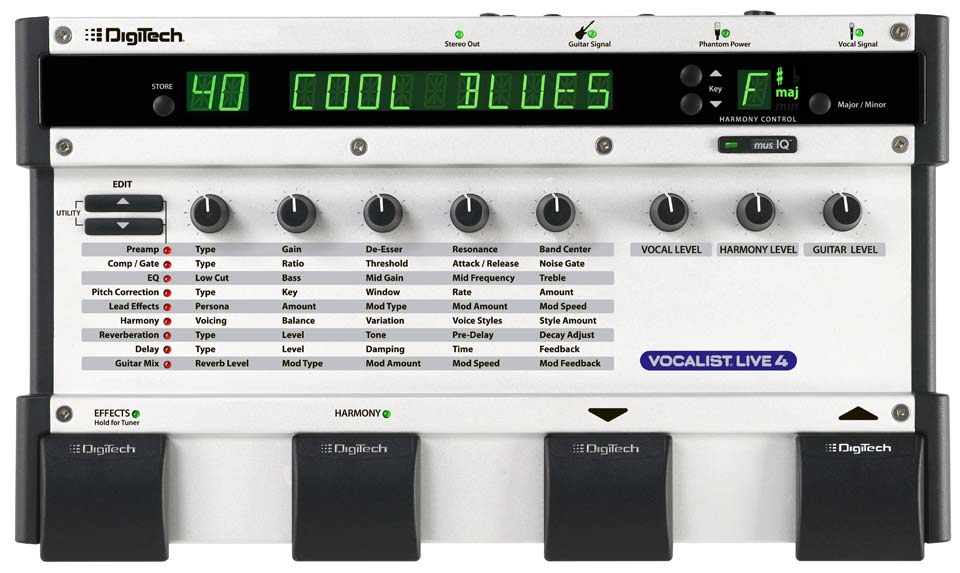Archive for September, 2009
I’m Only Inhuman: Vocal Trickery Through The Ages
Posted by Gavin Bradley in Creative, Engineering, Playing, Production, Remixing, Singing on September 6, 2009
Not content to replace pianos with synthesizers and drum kits with drum machines, producers have spent the last few decades pushing against that final frontier: the mechanization of the human voice. How have we dehumanized ourselves? Let me count the ways.
1. The Vocoder
In the mid-70s ‘robot voice’ tracks began turning up in earnest. Kraftwerk was at the forefront with the Vocoder (not the Vocorder, as it is so often mispronounced, but the Vocoder: it is a ‘coder’ of ‘vocals’). For many years the Korg Vocoder was the standard unit, but all vocoders work on the same principle: you sing into a mic and the electric signal created by your voice shapes the sound coming out of the synthesizer.
One of the first commercial hits with a female robot vocal upfront was ‘Funkytown’ by Lipps Inc., in 1980. In 1983 Styx gave us ‘Mr. Roboto’.
In recent years software plugins like the Orange Vocoder have appeared, eliminating the need for another physical keyboard taking up space in the studio. The sound is a little less cutting–as the raw, aggressive squelch of old analog vocoders are still somewhat outside the realm of the computer–but tracks like 2002’s ‘Remind Me’ by Röyksopp have carved out a different niche for the software vocoder’s silkier sound. Korg’s MicroKorg keyboard and Ensoniq’s rackmount DP-4 have kept hardware vocoders alive.
2. The Talkbox
Stevie Wonder began using a talkbox in the early 70s, but after Parliament-Funkadelic alumnus Roger Troutman mastered the physically challenging device and formed funk band Zapp, radio got a steady stream of funk/R&B hits through the first half of the 80s.
A talkbox setup is in many ways the reverse of a vocoder. A synthesizer–typically a Yamaha DX100–set to produce a very strong, pure tone is plugged into the talkbox. A speaker driver inside the talkbox pumps the focussed sound out through a hose which is inserted into the corner of a singer’s mouth. As the singer forms words, their mouth physically shapes the sound from the synthesizer. This happens in front of a mic, which picks up the shaped synth sound coming out of the player’s mouth.
Roger Troutman’s command of the instrument shines on ‘I Wanna Be Your Man’.
For a visual demonstration, check out the great Stevie Wonder covering ‘(They Long To Be) Close To You’.
3. Retriggering
Evolving through the 80s, samplers like the Synclavier, Fairlight and Ensoniq Mirage were initially intended to realistically recreate acoustic instruments. The Emulator seemed to encourage more creative sampling however, and the Emu SP1200 was the sample-based drum machine that spawned the dopest hip hop beats. But by the late 80s the Akai S1000 was the rackmount sampler of choice, and the fact that you could expand the memory to load entire vocal tracks into it made retriggered vocal riffs the next logical step in house music.
In 1989 Black Box sampled parts of Loleatta Holloway’s vocal on 1980 disco hit ‘Love Sensation,’ placing it over new piano chords and a housebeat. The rhythmic retriggering of her impassioned vocal–the computerized sonic repetition of those growling phrases of sound–brought a clean, futuristic sensibility to dance music, an effect akin to referencing ‘Love Sensation’ in quotations. However at first those quotations were used without the appropriate footnotes…so court cases followed.
4. Stuttering
Through the early 90s house producer MK (Marc Kinchen) ran with vocal sampling, taking the retriggering concept to extremes.
Four examples of his work follow. On his remix of the B-52s’ ‘Tell It Like It T-I-Is’ he experimented with stuttering the last syllable of individual lines. This became a common technique borrowed by many producers, so MK forged further, finding a more individualistic practice: he began pulling single syllables from various places in the vocal track, reordering them to create hooky melodies (with nonsensical words). His 1993 remix of the Nightcrawlers’ ‘Push The Feeling On’ made massive waves, superseding the original version of the song without using a single intact vocal line. In demand as a remixer, he created hooky vocal stutters for the Pet Shop Boys on his remix of ‘Can You Forgive Her’ and for Blondie on his updated remix of ‘Heart Of Glass’, dropping the full vocal in between stuttered sections…and reportedly turning out one remix per week at $15-20K.
5. Timestretching
In the mid-90s Armand Van Helden took the baton, building a brand in part on the innovation of cheeky vocal processing techniques. ‘Timestretching’ audio using software plugins is a commonplace practice now, to make beats match in tempo or to conform an acapella to the desired speed of a remix. At the time, Armand Van Helden pushed the relatively new technology to the limit, placing ridiculously elongated vocal lines in the climaxes and dropouts of his tracks as dancefloor payoffs.
A few examples of this new intersection of the machine and the biological: he stretches the line ‘Sugar Daddy’ as a re-entry to the beat in his remix of CJ Bolland’s ‘Sugar Is Sweeter’; he stretches the hook vocal to prepare us for a drop out of the beat in his own track ‘The Ultrafunkula’ (the same track also exists as ‘The Funk Phenomena’); and finally during a dropout in his remix of Janet Jackson’s ‘Got Til It’s Gone’ he obsessively retriggers the sample of Joni Mitchell singing ‘don’t it always seem to go…’ (from ‘Big Yellow Taxi’), building to an unidentifiable, impossibly timestretched spoken line before dropping the beat.
All samplers and audio production software have a timestretch function, but it sounds like he used an early version of the ‘Amazing Slow Downer’ Mac program. Either that, or the application was conceived later specifically to achieve that Armand Van Helden sound.
6. Auto-Tune
In 1997 a company named Antares marketed a rackmount box that could automatically correct a singer’s pitch in real-time. Shortly afterward, they released a software plug-in that did the same thing but also allowed graphical re-drawing of the pitch of individual notes in a recording.
Strangely perfect-sounding vocals began to appear on pop, country and R&B recordings, like the silky layers of Brandy’s voice on ‘Almost Doesn’t Count’ and ‘Angel In Disguise’ from her 1998 album ‘Never Say Never’:
Applied subtley the processing isn’t obvious, but the singer’s voice does take on an otherworldly pitch-perfection that we’ve all now come to expect. Singers, producers and engineers now assume that one of the phases of recording will be tuning the vocals.
7. Abused Auto-Tune
Put auto-tune into overdrive and you get what became known as the ‘Cher Effect’. In an interview in Sound-On-Sound producers Mark Taylor and Brian Rawling attributed the ear-twisting effect they applied to Cher’s vocals on 1998’s ‘Believe’ to a complicated vocoder setup. But what was obvious to most producers was exposed soon afterward: this was an auto-tune plug-in set to ruthlessly round the note up or down, causing lightning fast, perfect-pitch trills in the vocal. Madonna producer Mirwais took things a step further on tracks like ‘Impressive Instant’, redrawing the pitches of notes to create impossible, unexpected jumps in the melody.
8. Melodyne
In recent years hip hop hook singers like T-Pain, Lil Wayne, Akon and Kanye West have recorded exclusively with an effect universally referred to as auto-tune. I’m convinced however that these guys are mostly using a newer program called Melodyne. It works in a similar fashion but allows much more precise editing of multiple layers of vocals, as well as control over an additional attribute of the performance: the tonal quality of a singer’s voice–from munchkin to giant– independent of the pitch.
Kanye West’s vocal on ‘Heartless’ and T-Pain’s vocal on ‘Chopped And Screwed’ (a song whose subject incorporates reverence to vocal trickery) demonstrate the metallic sound of multiple takes of the lead vocal processed through Melodyne. On 2009 single ‘D.O.A. (Death Of Autotune)’ rapper Jay-Z started a backlash against the generic use of tuning as a crutch for singers.
Celemony, the makers of Melodyne, will soon be releasing a new version that will be able to isolate and manipulate the pitch of each note within chords on recordings (as opposed to individual notes). It’s anybody’s guess where this will take producers next in the field of vocal cybernetics.
9. Digitech Vocalist
For some reason Digitech is not one of the major go-to companies when it comes to effects boxes, but they’ve always pushed the envelope of digital processing. Imogen Heap’s 2005 hit offering ‘Hide And Seek’ was entirely acapella-and-effects, bringing a fresh ear-bending sound that could have been a traditional vocoder but for the oddly futuristic slides between notes. The lush, fanned out harmonies were created from single vocal tracks by the Digitech Vocalist box, which is able to digitally extrapolate live harmonies on the spot based on chords played on guitar or keyboard.
Look for additions to this article as new vocal processing technologies are used and abused by producers.
(They Long To Be) Close To You, Akai, Akon, Almost Doesn't Count, Amazing Slow Downer, Angel In Disguise, Antares, Armand Van Helden, Auto-Tune, B-52s, Believe, Big Yellow Taxi, Black Box, Blondie, Brandy, Brian Rawling, Can You Forgive Her, Cher, Chopped And Screwed, CJ Bolland, D.O.A., Death Of Autotune, Emu SP1200, Emulator, Ensoniq, Fairlight, Funkytown, Got Til It's Gone, Heart Of Glass, Heartless, Heil, Hide And Seek, I Wanna Be Your Man, Imogen Heap, Impressive Instant, Janet Jackson, Jay-Z, Joni Mitchell, Kanye West, Korg, Lil Wayne, Lipps Inc., Loleatta Holloway, Love Sensation, Madonna, Marc Kinchen, Mark Taylor, Melodyne, Metro, Mirage, Mirwais, MK, Mr. Roboto, Never Say Never, Nightcrawlers, Parliament-Funkadelic, Pet Shop Boys, Push The Feeling On, Remind Me, Ride On Time, Roger Troutman, Röyksopp, S1000, Sound-On-Sound, Stevie Wonder, Styx, Sugar Is Sweeter, Synclavier, T-Pain, Talkbox, Tell It Like It T-I-Is, The Funk Phenomena, Timestretching, Ultrafunkula, Vocoder, Yamaha, Zapp
-
You are currently browsing the archives for September, 2009
-
-
Archives
- April 2013 (1)
- August 2011 (1)
- November 2010 (1)
- August 2010 (3)
- July 2010 (1)
- March 2010 (1)
- January 2010 (1)
- November 2009 (1)
- October 2009 (2)
- September 2009 (1)
- August 2009 (1)
- July 2009 (4)
- June 2009 (7)
- May 2009 (10)
-
Meta
